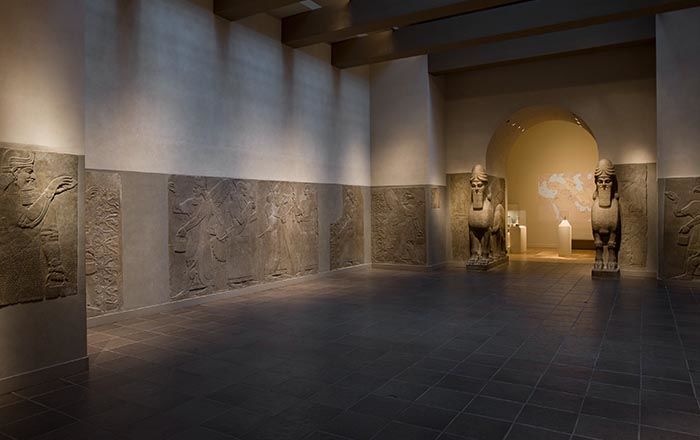Vessel in form of horned quadruped
Not on view
This vessel takes the shape of a horned animal, probably a bull. It has four cylindrical legs and a similar neck, with a conical snout and horns. It also has small conical ears and large, flat eyes with raised pupils. A tubular handle connects its shoulders to its hindquarters, and there is a round pouring hole in its chest.
This vessel was excavated at Chekka Sabz (also spelled Chigha Sabz, meaning ‘green mound’) in the Pish-i Kuh (‘before the mountain’) region of Luristan in western Iran. It was found in a buried cache of objects which included two Neo-Elamite cylinder seals, two vessels in the form of human figures, and at least three other bull-shaped vessels. The seals date to the 8th-6th centuries B.C., and the pottery found with them, including this vessel, likely date to the same period. Although probably a small village in the Bronze Age, by the Iron Age Chekka Sabz had been reduced to a campsite, perhaps used by pastoralists as they transitioned between summer and winter pastures. The cache seems to have been buried in haste, and it is clear that whoever buried the objects did not, or could not, return to recover them.
The human figures from Chekka Sabz have their hands clasped before them. This pose is attested in Elamite art, where it appears to be the proper gesture to make in the presence of a god. Thus these figures probably represent attentive worshippers, and were likely meant to be offerings. The same is probably true of this vessel.
This image cannot be enlarged, viewed at full screen, or downloaded.

